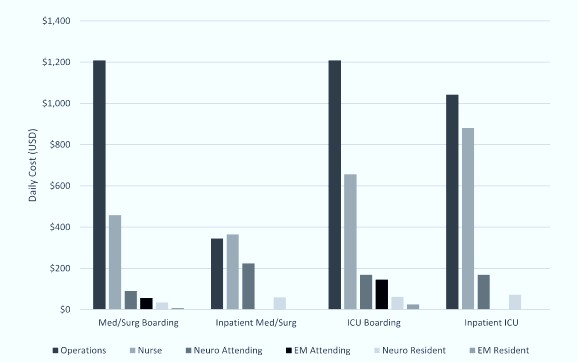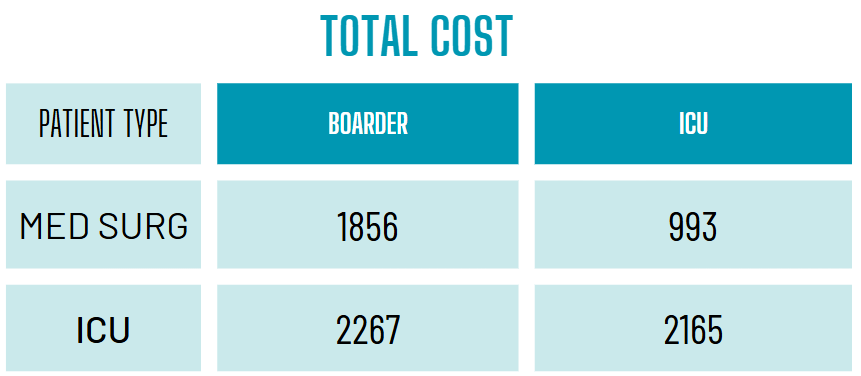The Cost of Boarding - w Dr. Schreyer & Dr. Canellas
Contributor: Jason Hine MD, Kraftin Schreyer MD, and Maureen Canellas MD
Boarding plagues Emergency Departments the country (world?) over. It negatively impacts patient satisfaction, staff wellbeing, patient safety, among others. But what does it cost the hospital/healthcare system?
A recent article in Annals tries to answer that question. We sat down with first author and our friendly neighborhood Operations specialist to look at this article and the true cost of boarding.
Keeping your skills up in rare procedures is an uphill battle. Let SimKit do all the heavy lifting with simulation training that delivers to your door once a month. Use coupon code SimKit10 for 10% off
The Study
Measurement of Cost of Boarding in the Emergency Department Using Time-Driven Activity-Based Costing in Annals of Emergency Medicine.
Source:
Canellas MM, Jewell M, Edwards JL, Olivier D, Jun-O’Connell AH, Reznek MA. Measurement of Cost of Boarding in the Emergency Department Using Time-Driven Activity-Based Costing. Ann Emerg Med. 2024 Oct;84(4):376-385. [pubmed]
Key Points
Boarding is the practice of holding admitted patients in the emergency department.
It is one of the greatest contributors to ED crowding, which is associated with ambulance diversions, staff burnout, prolonged hospital stays, increased risk of violence, decreased patient satisfaction, and increased preventable medical errors.
In fact, in 2022, ACEP and other stakeholders wrote a letter to President Biden highlighting this public health emergency
HOW DID WE GET HERE? WHAT IS IT COSTING US?
The cause to boarding is multifactorial, without any one clear culprit cause. One theory suggests that financial drivers are to blame for the boarding issue, as hospitals may prioritize elective admissions due to higher reimbursement rates.
The real cost of boarding is hard to quantify, making the issue more challenging to define. And of course, hard to define issues are even more difficult to solve.
WHAT DID THESE AUTHORS LOOK AT?
To better quantify the cost of boarding, these authors try to use a better tool to measure.
Time-Driven Activity-Based Costing (TDABC) is an accurate, but resource and time-intensive, method used to calculate the true cost of each step in a care process, including personnel, operational, and opportunity costs.
Study Design: The study was a prospective observational study of admitted stroke patients at a single urban academic medical center, using TDABC to measure the total cost per patient for boarded and inpatient med-surg and ICU patients.
Research assistants either directly observed patient care (in the ED) or did survey assessment of patient care and resource utilization (on the floors and ICU) related to to nurse, resident, and attending time spent with the patient.
The authors worked closely with their finance department to calculate the operational and personnel costs for each patient.
Key Findings:
The cost per day for an ICU border was similar to an ICU inpatient.
The cost of boarding med-surg patients was roughly two times higher than inpatient care.


ED nurses spent less time with boarded patients than inpatient nurses, despite higher costs.
The primary driver of cost disparity was operating costs, as EDs are expensive and resource-intensive areas.
Conclusion and Takeaways:
Boarding leads to poor staff and patient satisfaction, with significant financial costs.
This study shows the cost of care for boarding patients to be ~2x that of a floor med-surg patient.
These findings should be used to communicate the financial consequences of boarding to hospital administrators and advocate for change, such as increased inpatient capacity, resource diversion to EDs, and improved efficiency of care.
References
- Canellas MM, Jewell M, Edwards JL, Olivier D, Jun-O’Connell AH, Reznek MA. Measurement of Cost of Boarding in the Emergency Department Using Time-Driven Activity-Based Costing. Ann Emerg Med. 2024 Oct;84(4):376-385. [pubmed]
- Schreyer KE, Martin R. The Economics of an Admissions Holding Unit. West J Emerg Med. 2017 Jun;18(4):553-558. [pubmed]


